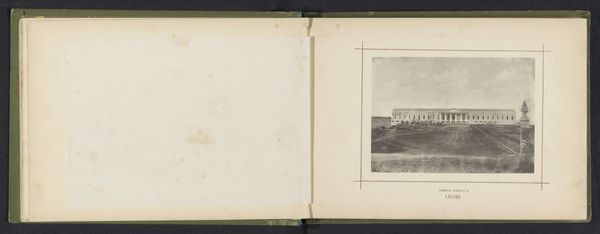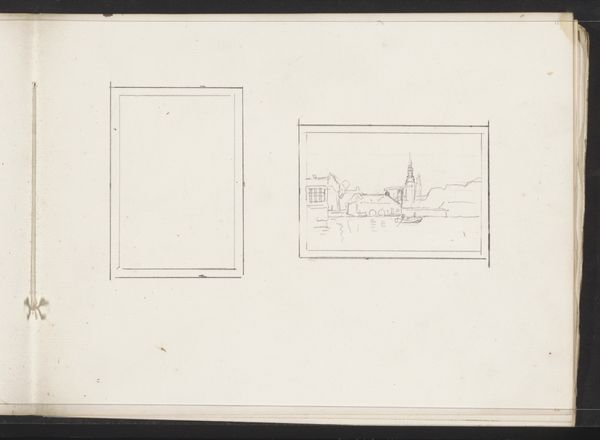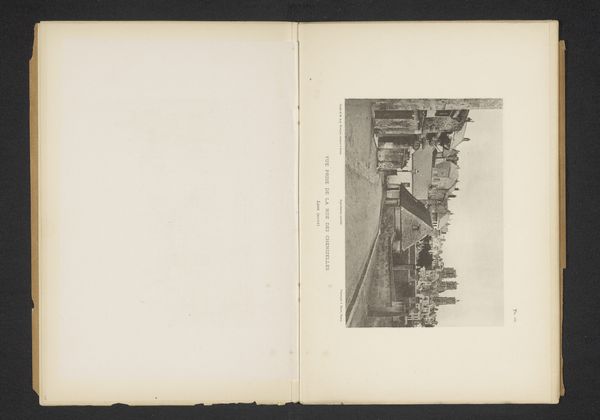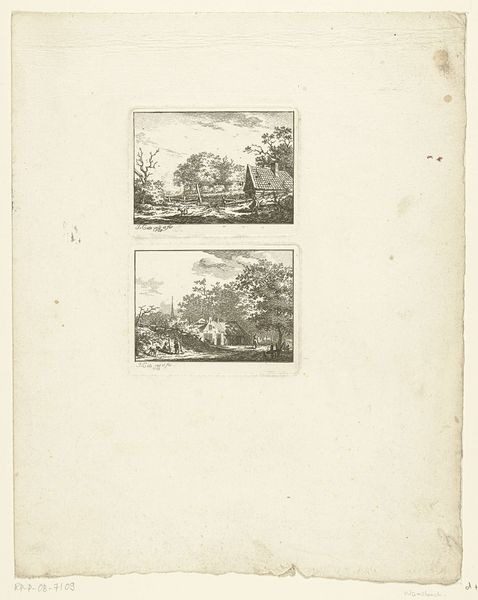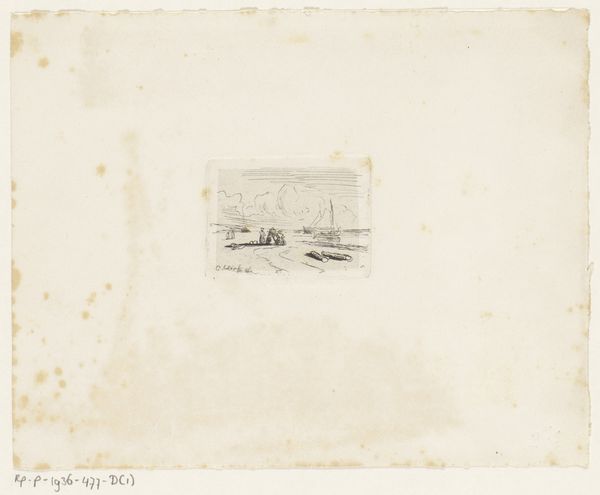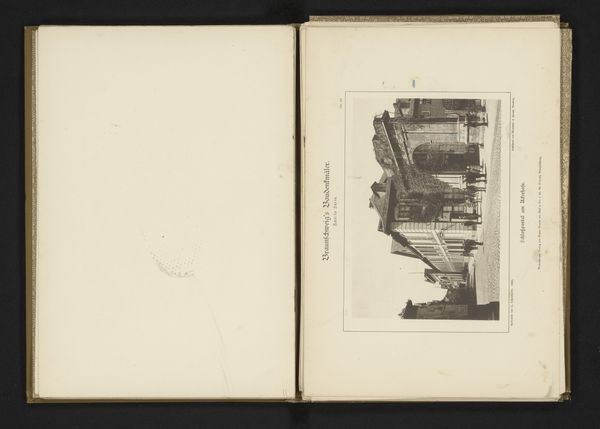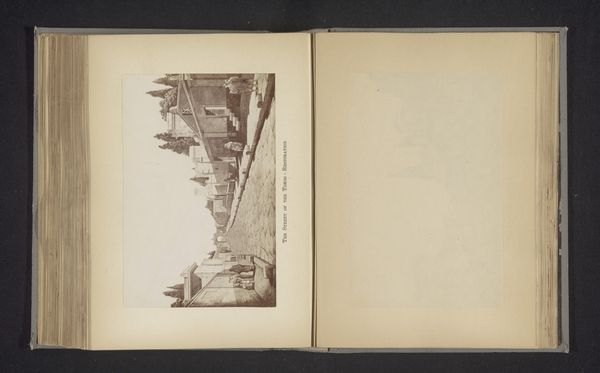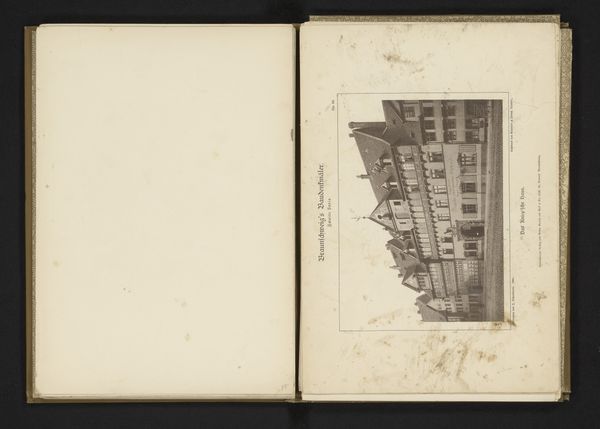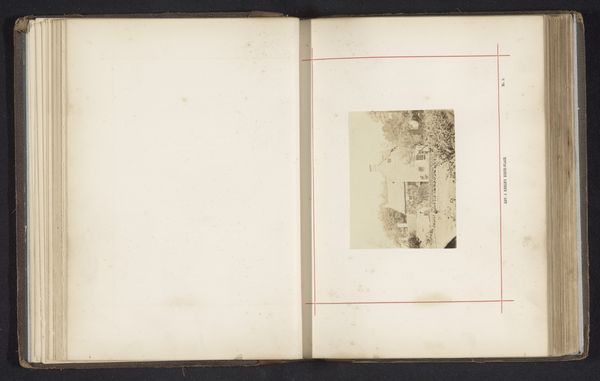
#
aged paper
#
light pencil work
#
ink paper printed
#
hand drawn type
#
hand lettering
#
personal sketchbook
#
hand-drawn typeface
#
fading type
#
sketchbook drawing
#
sketchbook art
Dimensions: height 128 mm, width 195 mm
Copyright: Rijks Museum: Open Domain
Editor: This is a page from G. di Giovanni’s sketchbook, depicting the Grand Hotel Trinacria in Palermo in the 19th century. It's ink on paper, a delicate drawing with hand-lettered text beneath the image. I find it fascinating to glimpse this slice of the past, almost like looking at an old postcard. What do you find most striking about this image? Curator: Well, beyond the obvious historical documentation of the Grand Hotel, what’s really compelling here is how the image functions within a larger social and institutional context. A sketchbook, typically a private space for artistic exploration, now becomes a public artifact. Consider who might have been intended to view this page, originally. Was it a preparatory study for a print, aimed at promoting tourism or investment in Palermo? Or, could it be that its creation had nothing to do with anything outside the artist’s own private amusement? Editor: That's a really interesting way to think about it, shifting from the subject matter to its potential purpose and audience. I was so focused on the depiction of the hotel itself, but framing it as a possible promotional image, given it would have served as an advertizing piece of the Trinacria… Curator: Precisely! These images play a role in shaping perceptions and aspirations related to travel and social class. How would a 19th-century viewer's understanding of Palermo and luxury be shaped by this carefully crafted image? Is there an element of aspiration being built into this artifact? Editor: That adds another layer to it – it's not just a pretty picture, but also a kind of historical marketing tool. It does make you wonder what other images and texts circulated with it to really drive the image of Palermo being displayed here. It feels a little incomplete. Curator: It does! It opens a window into understanding 19th-century tourism and image-making, also showing us how the intersection of art, commerce, and social ideals can have an impact in the artworld. Editor: I'll definitely look at these sketches differently from now on.
Comments
No comments
Be the first to comment and join the conversation on the ultimate creative platform.

